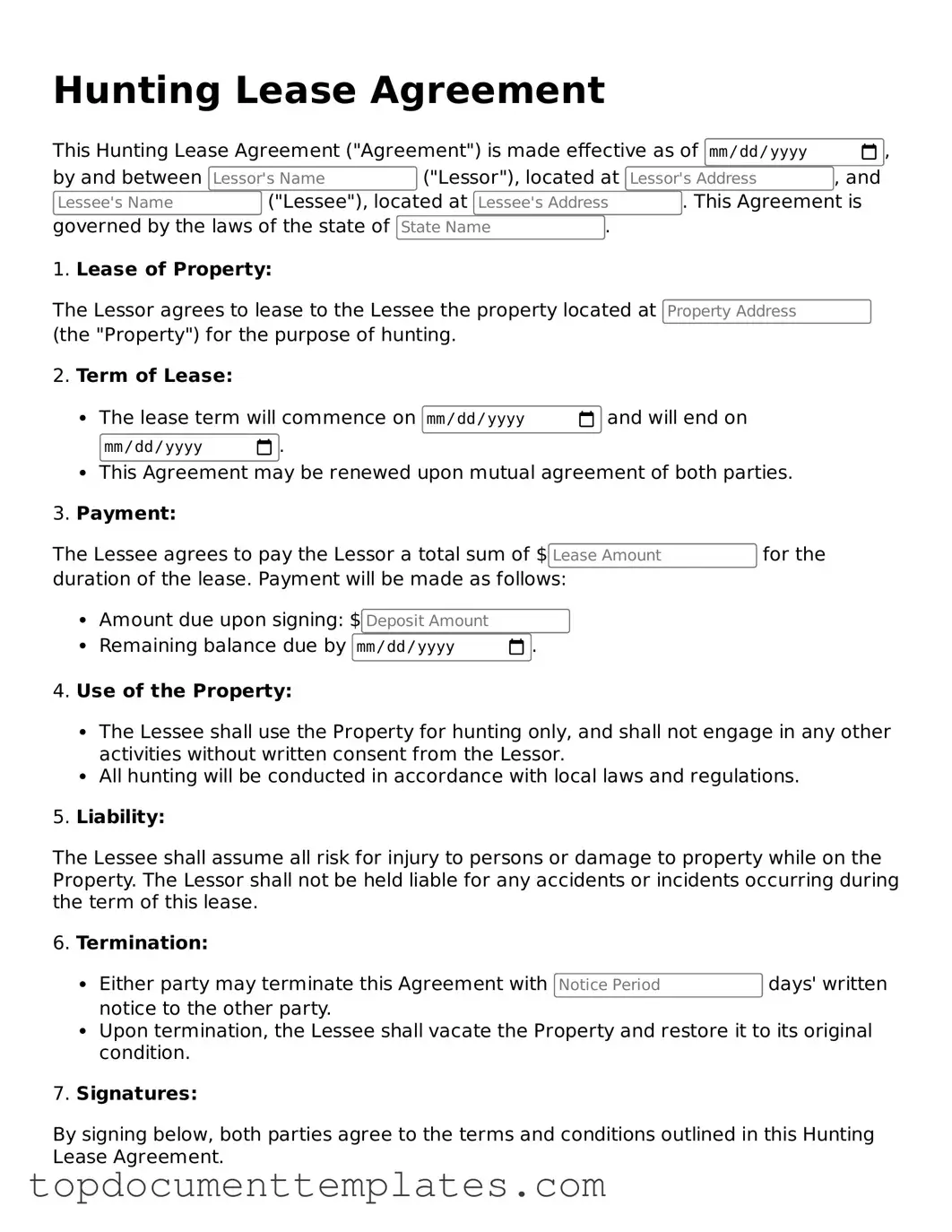Official Hunting Lease Agreement Template
A Hunting Lease Agreement is a legal document that outlines the terms and conditions under which a landowner allows individuals or groups to hunt on their property. This agreement protects the interests of both parties by specifying hunting rights, duration of the lease, and any associated fees. Understanding this form is essential for ensuring a smooth and mutually beneficial arrangement.
To fill out the Hunting Lease Agreement form, click the button below.
Open This Form
